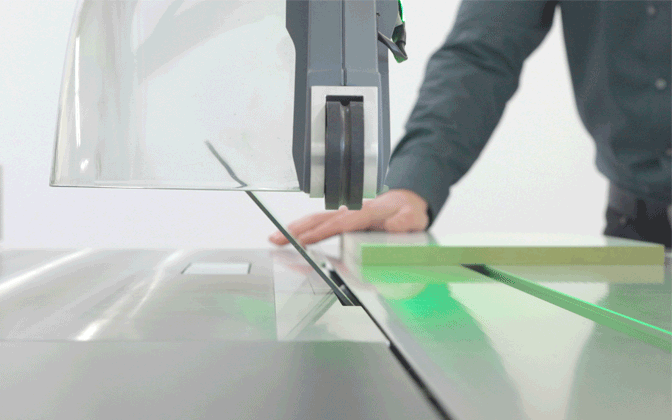Hand injuries are, unfortunately, a common problem in many industries. Every year, thousands of individuals suffer injuries to their fingers and hands while using machinery such as saws, metal presses, grinding machines etc.
Fingertip injuries, avulsions, or even cut-off fingers and hands are all typical workplace accidents caused by mechanical hazards. The injuries have significant physical, social and financial implications for the victim, but also for employers and manufacturers of the equipment.
Fortunately, there are several ways you can improve machine safety, reduce mechanical hazards and prevent workplace-related hand injuries.
- Properly train employees on how to operate machinery and to ensure that users are trained in machine safety; they should be aware of the risks associated with certain machines and must follow policies and procedures developed by the company to prevent injuries.
- Another way to avoid hand injuries is to use personal safety equipment such as gloves and different types of machine guarding. Machine guards can be placed on dangerous machines to protect the operator’s hands, and gloves can be worn to protect fingers from getting caught in moving parts or being cut.
- A third option is to incorporate hand safety functions into the machinery by design — hand tracking and artificial intelligence are two cutting-edge, and proven technologies that can help reduce hand injuries at home and at work. Altendorf has already implemented this approach.
Hand tracking, artificial intelligence, and machine learning technologies, combined with standard sensors can significantly reduce hand injuries in the industrial sector. An application that utilizes hand tracking to detect hands and anticipate their movement can shut down machinery and generate visual or audible warnings indicating when people’s hands are in danger.
How you improve hand safety at work?
Hand tracking is a technology that detects your hand and how it moves. It is an enabling technology that allows apps to use hand-gesture data to operate a device or engage with an object — without requiring you to touch it. The improvement of camera and sensor-based tracking is also seen in areas like automated driving and remote robotic command systems.
The use of camera sensors and hand tracking technology to increase safety in an industrial setting has several distinct advantages:
1. It has the ability to instantly automate safety procedures. It is able to anticipate possible dangers before they occur, preventing hand injuries from taking place.
2. It can provide real-time feedback to machine operators, warning them when their hands are in danger and stopping the machine if necessary.
3. It can be used to improve machine design, making industrial equipment safer for workers to operate. Because equipment need not be redesigned, this method maintains existing machine/equipment floor layouts.
HAND TRACKING AS A SAFETY SYSTEM
Hand tracking is a straightforward concept, but the technical implementation is more challenging. When you consider all of the variables that affect hand tracking performance, such as different hands, postures and states, and even whether or not you’re wearing protective gloves, it’s clear that tried-and-true solutions are required.
The main components used in hand tracked safety equipment are:
#1 The sensors
The first step in the process is to introduce a standard sensor — such as an RGB camera, Lidar, IR, or VGA 640×480 — with proper line-of-sight of the hazard area. This sensor can be mounted on equipment, on a wall, or on another device or machine in the area. The sensor constantly monitors the dedicated area.
#2 The artificial intelligence (AI) and machine learning middleware
The sensor streams signals to a middleware application on a processing unit, which could be the CPU of existing equipment or a dedicated one. There are of course technical requirements for this kind of CPU to ensure that it powers the hand tracking technology in an appropriate way — something equivalent to Intel NUC11 (Intel Core i7 11th gen. 1185G7 / 3 GHz).
Using artificial intelligence and machine-learning techniques, the middleware application is optimized for the specific environment, addressing factors such as distance, lightning, and other conditions such as the use of protective gloves. During the learning process, the app masters activities such as detecting a hand in a particular place and movements that can cause harm, as well as more complex duties like controlling the machine with gestures.
#3 The use-case application for improving hand safety
Depending on the needs of the use case and risk scenario, the middleware application may send a variety of signals to the equipment in order to execute a command. The most common shutdown and stop commands are just two examples. Turning on warning lights, sounding an alarm, providing cooling fluid, or utilizing rotational brakes are all possible. Almost any actuator with a coil, motor, or directional flow control can be integrated with the control loop.
A practical application of ManoMotion hand tracking safety solution?
Our collaboration with German Altendorf — the inventor of the sliding table saw — is a proof-of-concept example that demonstrates how hand tracking has been successfully utilized in a safety application and has been granted concept level approval by the German Occupational Safety Institute (IFA – Institute for Workplace Safety).
The goal was to tackle the safety problem without compromising machine performance or production. The resulting product is the world’s first safety-classified solution for industry-grade saws.
The new machine safety mechanism developed by Altendorf utilizes hand tracking to identify when an operator’s hands are too near to the saw blade, shutting down the machine automatically and quickly moving the saw blade beneath the board line to prevent finger or hand injury.
Shutting the machine down before a person’s hands enter the predefined danger zone is based on an anticipating injury risk scenario that uses hand placement. For more information, check out the HandGuard System (YouTube).
Do you want to use hand tracking to enhance machine safety?
Do you design or manufacture equipment that is used by people who face the danger of finger or hand injuries? Is there a high incidence of hand injuries in your sector? Do you think that early warning systems for hand injuries could assist prevent these problems?
If you have answered yes to any of these questions, then contact ManoMotion at sales@manomotion.com or click here to schedule an exploratory call where we discuss how to reduce hand injuries when operating your equipment.
You may also download our Industrial Safety Whitepaper.
New technologies can complement traditional machine guarding and improve machine safety. By integrating cutting-edge AI and machine learning with standard sensors, you may increase safety and productivity in your workplace even further.






